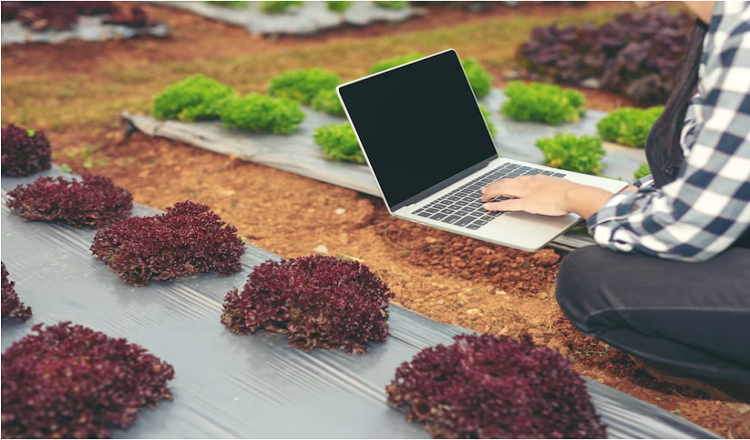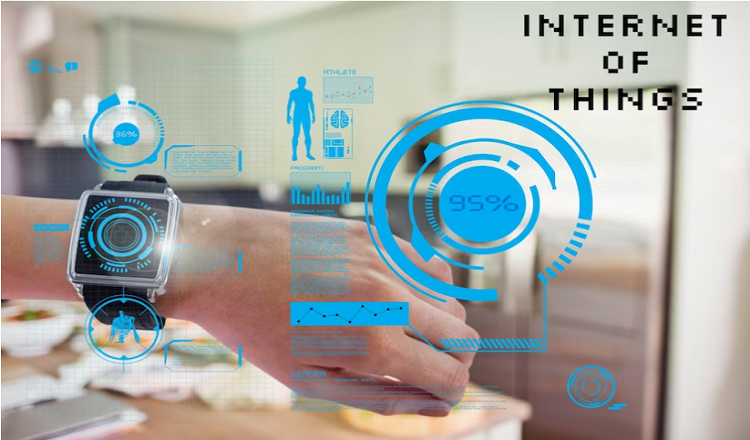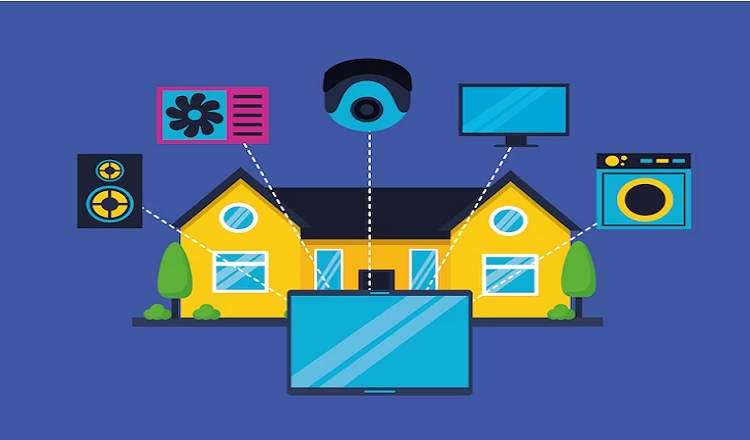Artificial Intelligence (AI) has been a buzzword in the technology industry for a while now, and it’s not hard to see why. With its ability to automate mundane tasks, improve decision-making, and enhance customer experiences, AI has revolutionized the technology landscape. But what exactly is AI, and how is it changing the way we live and work?
In a nutshell, AI refers to the development of computer systems that can perform tasks that would usually require human intelligence. These systems use machine learning algorithms and other techniques to analyze data, recognize patterns, and make decisions. From healthcare to finance to manufacturing, AI is being used in various industries to optimize processes and drive growth. In this article, we’ll explore five ways in which AI is changing the technology landscape, with a focus on its impact on agriculture and precision farming. We’ll start by defining IoT and explaining the concept of precision farming before diving into the importance of AI in this field. So, sit back and get ready to learn how AI is transforming the world of farming
Benefits of IoT in Agriculture
IoT has brought about a range of benefits to the agriculture industry, from reducing resource waste to improving crop yields. With real-time monitoring and automated processes, farmers can now optimize their operations, resulting in increased efficiency and lower costs.
One of the most significant benefits of IoT in agriculture is the reduction of resource waste. By using sensors to monitor soil moisture and nutrient levels, farmers can ensure that they only use the necessary amount of water and fertilizer, thus minimizing waste. This not only saves money but also helps to reduce the environmental impact of farming.
IoT also leads to increased efficiency in agriculture by automating tasks such as irrigation and pest control. This saves farmers time and allows them to focus on other aspects of their business. Additionally, IoT technology allows for better decision-making through the analysis of real-time data. Farmers can use this information to make more informed decisions about when to plant, harvest, and fertilize their crops. As a result, farmers can optimize their yield and improve their profitability.
Precision Farming Techniques
Precision farming techniques, enabled by IoT, have significantly transformed the way farmers operate. These techniques allow farmers to use data to make better decisions and optimize their crop yields. One of the most critical techniques in precision farming is GPS-based soil analysis, which allows farmers to get detailed information on their soil’s health and nutrient content.
Weather monitoring and forecasting are also essential precision farming techniques. IoT sensors can provide farmers with real-time information about weather conditions, helping them make informed decisions about when to plant, irrigate, or harvest their crops. Real-time monitoring of crops is another essential technique, allowing farmers to track their crops’ growth and health and adjust their strategies accordingly.
Drones are also becoming increasingly popular in precision farming, as they provide aerial surveillance and can capture detailed images of crops. This data can be used to detect issues such as nutrient deficiencies or pest infestations, allowing farmers to take immediate action. Finally, automated irrigation systems are another critical technique, allowing farmers to optimize water use and minimize waste.
Overall, precision farming techniques offer farmers a wide range of benefits, including increased yields, reduced waste, and improved profitability. With the help of IoT, these techniques are becoming increasingly accessible and essential for farmers looking to improve their operations.
IoT Devices Used in Precision Farming
IoT devices are playing an increasingly significant role in precision farming, offering farmers a range of tools to optimize their operations. One of the most critical devices used in precision farming is sensors for soil moisture and nutrients. These sensors provide real-time data on the health of the soil, allowing farmers to determine precisely when and how much water and fertilizer their crops need.
Weather sensors are another essential IoT device used in precision farming, providing farmers with real-time information about temperature, humidity, and precipitation. This data can be used to make informed decisions about planting, harvesting, and irrigation, ultimately improving crop yields.
Smart irrigation systems are also becoming increasingly popular, allowing farmers to optimize water usage and minimize waste. By using IoT devices, farmers can control irrigation systems remotely, ensuring that crops receive the right amount of water at the right time.
Finally, livestock monitoring sensors are another essential IoT device used in precision farming. These sensors allow farmers to track the health and location of their livestock, ensuring that they receive the care and attention they need.
Overall, IoT devices have revolutionized precision farming, offering farmers a range of tools to improve their operations and boost their crop yields. With the continued development of IoT technology, precision farming is set to become even more efficient and productive in the years ahead.
Case Studies of IoT in Precision Farming
IoT has already made significant strides in precision farming, with several case studies showcasing the technology’s potential. One example is smart farming in India, where IoT is being used to optimize crop production and reduce water waste. By using IoT sensors to monitor soil moisture and weather conditions, farmers in India have been able to increase their crop yields and improve their profitability.
Another case study comes from the U.S. corn industry, where IoT is being used to improve the accuracy of crop monitoring and reduce waste. By using IoT devices to track crop growth and soil health, farmers in the U.S. are better able to optimize their crop yields and minimize their environmental impact.
In China, precision farming techniques enabled by IoT have been used to address issues such as soil pollution and water scarcity. By using IoT devices to monitor soil and water quality, Chinese farmers have been able to reduce waste and improve their crop yields.
Finally, IoT is also being used in aquaponics, a farming technique that combines aquaculture and hydroponics. By using IoT sensors to monitor water quality and fish health, farmers can optimize their production and improve their profitability.
Overall, these case studies demonstrate the significant potential of IoT in precision farming, and suggest that the technology will continue to transform the agriculture industry in the years to come.
Challenges and Limitations of IoT in Agriculture
While IoT offers many benefits in agriculture, there are also several challenges and limitations that must be considered. One of the most significant challenges is the high initial costs of implementing IoT systems. This can be a significant barrier to entry for small-scale farmers who may not have the resources to invest in expensive technology.
Another limitation is the need for strong connectivity, as IoT devices rely on internet access to communicate and transmit data. This can be a challenge in remote areas or regions with poor connectivity, making it difficult for farmers to access real-time data.
Cybersecurity risks are another concern, as IoT devices are vulnerable to hacking and other cyber attacks. This can put sensitive information at risk and undermine the effectiveness of IoT systems in agriculture.
Compatibility issues with legacy systems are also a limitation of IoT in agriculture. Many existing systems and technologies may not be compatible with IoT devices, making it difficult for farmers to integrate new technology into their operations.
Finally, the limited availability of skilled workers is also a challenge. Farmers may struggle to find and hire workers with the necessary skills to operate and maintain IoT systems effectively.
Overall, while IoT offers many benefits in agriculture, these challenges and limitations must be addressed to ensure that the technology is accessible and effective for all farmers.
Future of IoT in Precision Farming
The future of IoT in precision farming is promising, with emerging technologies expected to bring even more benefits to the agriculture industry. Investment in IoT in agriculture is increasing, as more and more farmers recognize the potential of this technology to improve efficiency, reduce waste, and increase profitability.
One area of particular interest is the integration of IoT with artificial intelligence, as this could enable even more precise and targeted decision-making. With AI, IoT devices could analyze data in real-time and make automatic adjustments to optimize crop production.
Looking ahead, predictions for the future of precision farming suggest that IoT will continue to play a critical role in improving the efficiency and sustainability of agriculture. The continued development and refinement of IoT technology will enable farmers to make better use of data and increase their yields, while minimizing waste and environmental impact.
Conclusion
In conclusion, the use of IoT in agriculture and precision farming has revolutionized the way we produce food, increasing efficiency, reducing waste, and improving yields. With IoT devices, farmers can monitor and optimize their operations in real-time, making more informed decisions about irrigation, fertilization, and pest control.
Throughout this article, we have discussed the benefits of IoT in agriculture, including the reduction of resource waste, increased efficiency, lower costs, better decision-making, and improved crop yields. We have also explored precision farming techniques, the IoT devices used in precision farming, and case studies of IoT in precision farming.
While there are challenges and limitations to using IoT in agriculture, such as high initial costs and cybersecurity risks, the potential benefits of this technology are enormous. As investment in IoT in agriculture continues to grow and emerging technologies, such as AI, are integrated, the future of precision farming looks bright.
In summary, the importance of IoT in agriculture and precision farming cannot be overstated. By leveraging the power of data and automation, we can create a more sustainable, efficient, and productive agricultural sector, benefiting farmers and consumers alike.




